Infrastructure Facilities
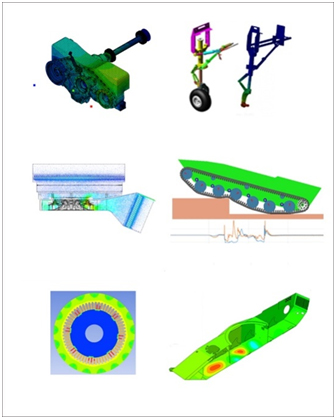
CVRDE has state-of-the-art computational infrastructure including High Performance Computing facility which augments the design and analysis of various systems and subsystems being developed by CVRDE. Detailed design documents are carried out using solid modelling software and are controlled by Product Lifecycle Management (PLM) software. This ensures a first time right design. Various types of analysis of mechanical systems are being carried out viz., Multi Body Dynamics analysis, Finite Element Analysis for structural &thermal simulation and Computational Fluid Dynamics.

- MPower: 1500 kW
- Speed: 4800 rpm
- Torque: 9500 Nm
The 1500 kW Engine Test Facility can be used for Performance Evaluation of Engines of Armoured Fighting Vehicles. The facility consists of Test Equipment comprising Hydraulic Dynamometer (Dyno), Throttle Actuator and Dyno Controller and Measuring Equipment such as Load cum Speed Measurement System, Fuel Consumption Meter, Blow By meter, Smoke Meter, Air Mass Flow Meter and host of sensors for Temperature, Pressure and Flow. Combustion phenomenon is studied by utilizing high-speed 16 channel indicating system for crank angle and time-based measurements of combustion pressure, low pressure phenomenon at intake and exhaust manifolds. Injector needle lift sensor is also provided to correlate the combustion curve with injection timing and further performance analysis. The facility has been integrated with interfaces to carry out Running In and Performance Test of ARJUN MBT, MB838, 1030 kW Engine after overhaul for the first time in India
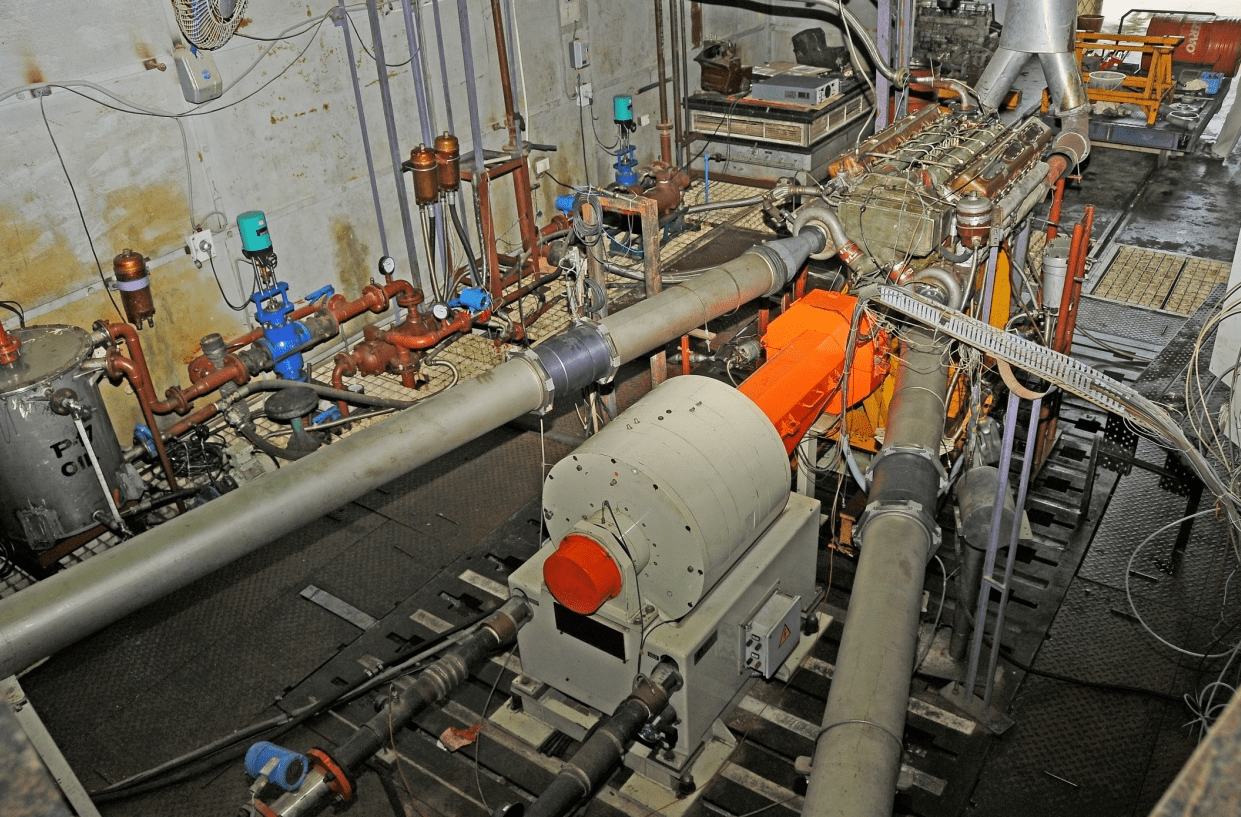
- Power: 870 kW
- Speed:6500 rpm
- Torque: 6000 Nm
The Engine Test Facility is extensively used for Performance Evaluation of Engines up to 870 kW capacity. The Facility consists of Test Equipment comprising Eddy Current Dynamometer (Dyno), Throttle Actuator and Dyno Controller and the Measuring Equipment such as Load and Speed Measurement System, Fuel Consumption meter, Blow By meter, Smoke Meter, Air Mass Flow Meter and host of sensors for Temperature, Pressure and Flow. Also High Coolant and Lubricant temperature Simulation testing is enabled through installation of three way control valves which contributed greatly in high temperature Endurance Test.
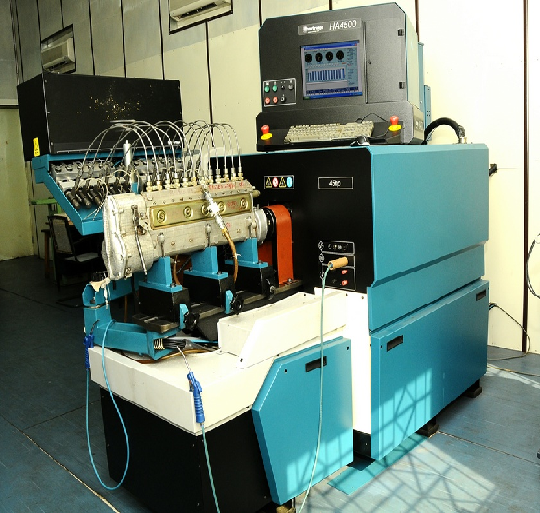
Salient Features
- Drive: 45 hp DC motor, thyristor controlled
- Speed Range : 30 r/min to 3000 r/min
- Pump deliveries : Max up to 650 Cubic mm/st
The Test Facility consists of Dynamic Measurement and Analysis Equipment, enabling Performance Testing and Optimization of Fuel Injection Pumps of Diesel Engines. The Test Bench consists of 35 kW Thyristor Controlled Drive to power the Test Pumps for speed range upto 3000 rev/min; Pump Deliveries up to 650 Cubic mm per stroke for a maximum of 12 injector elements per pump. The salient features of the facility are built in Video Metering System, Dynamic Phasing, Temperature Controller, High Transient Pressure Measurement with reference to Cam Angle, LVDT mounted Injector assembly for measuring Needle Lift and the software capability for acquisition cum Post Analysis of Transient Parameters.

Salient Features
- Motor Speed : 3000 rpm
- Torque Transducer : 2000 Nm
- Power : 220 kW
- Dynamometer : 1000 Nm
- Step up gear box : 1:4 ratio
The 220 kW Variable speed drive test facility is used to test rotary components of armoured fighting vehicles and commercial vehicles which can transmit power upto 220 kW. DC motor of capacity 220 kW (max speed 3000 rpm) is used as a prime mover with thyristor controller. Hydraulic dynamometer of capacity 1000 Nm is used as a loading device. Data logging facility is available to monitor pressure, temperature and speed during testing. This test facility can be used to test gear boxes, automatic transmissions, fluid couplings, final drive units and retarders.

Salient Features
- Motor Speed : 1500 rpm
- Torque Transducer : 500 Nm
- Motor Power : 110 kW
- Air Flow : 10 kg/s (max)
- Pressure : 1000 mm of H20
This test facility is extensively used for testing of engine cooling fans for armoured fighting vehicles in accordance with BS848 test standard. DC motor of capacity 110 kW (max speed 6000 rpm with step-up gear box) is used as prime mover. It is having capacity to test up to 10 kg/s air flow rate. The test facility is utilized to evaluate the performance of Engine Cooling Fans of Arjun MBT, T-series and indigenous fans along with the radiator assembly also. Instrumentation facility is available to monitor pressure, temperature, torque and speed during testing.

Salient Features
- Speed : 2800 RPM
- Power : 37 kW
- Volume : 1.56 m3/sec (3300 cfm)
- Dust feed system : 10gm/min to 200gm/min
- Pressure : 1000 mm of H20
- Pressure : 1000 mm of Hg
The air cleaner test facility is extensively used for testing of air cleaners of both wet and dry types in accordance with BS1701. Capability to evaluate the flow restriction characteristics (pressure drop test) and mean dust retaining efficiency (dust penetration test). 37 kW variable speed drive motor along with the blower is used as a prime mover. The facility has air compressor and dust feed assembly to feed dust from 10 gm/min to 200 gm/min; and a sensitive balance to weigh air cleaners with up to 100 kg. The test facility can also be used to evaluate the performance (air flow characteristics) of radiator, oil cooler and louvers of armoured fighting vehicle. Instrumentation facility is available to measure the speed, temperature, pressure and air flow rate.

Salient Features
- Prime Mover : 11 kW VSD
- Speed : 3000 rpm
- Flow rate : 1000 lpm
- Main Tank : 1300 liters
- Heater : 18 kW
The Pump test facility is extensively used for evaluation of engine coolant pumps with high temperature coolant. Capability to evaluate the flow and pressure characteristics at “variable Speed Mode” and “Constant Speed Mode” with simulated speed and temperature condition. 11 kW varaiable speed drive motor is used as a prime mover. The facility has flow meter to measure flow upto 1000 lpm. Instrumentation facility is available to measure the speed, torque, temperature, pressure and flow rate of the test specimen.

- Double Wheel Testing Station
- Central Drum Speed : 100 kmph
- Radial Load : 50 kN
- Slip Angle : ± 15° Camber Angle : ± 25°
- Diameter of specimen : 1000 mm (max)
- Diameter of specimen : 150 mm (min)
The Wheel Test Facility is used to evaluate the “Rubberised Wheels” and “Top Rollers” of armoured fighting vehicles for “Performance” and “Endurance Test - 100 hours (continuous)” under simulated Speed and Load Condition with automated test cycle. Data logging facility is available to measure and monitor load, pressure, temperature and speed during testing in both the wheel testing station.

The test facility is for testing and Evaluation of suspensions of armoured fighting vehicles, aircraft landing gear, bus strut etc.,to simulate road/runway undulations with specificamplitudes and frequency. The frequencies and amplitudes are determinedby speed of the vehicle and the track length in contact with successive peaksof test track. This test rig has both horizontal and vertical actuator systems with max. vertical displacement of 600 mm and horizontal displacement of 100 mm , that can individually and simultaneously simulate both road undulations and steering effects. The test rig is adaptable to various types of suspensions likeLanding gear and hydro gas strut for heavy vehicles. TheRig is capable to give necessary impact loads, experienced during landing.

This facility is for testing and evaluation of suspensions of armoured fighting vehicles etc. for damper tuning.Simulation of the dynamic loads of sprung mass (the turret and hullloads on the suspension system of AFV), to fine tune the damper systems forhigh frequency modes upto 15 Hz is possible on Sprung Mass Test Rig. It can simulate vertical loads up to 250 kN and 600 mm vertical displacements.Simulation of terrain displacements as cyclic reciprocating motions atdifferent frequencies with the help of hydraulic actuator
Test Facilities for AMAGB
Endurance Test Rig (ETR) consists of a motor coupled with step-up gear box (20,000 rpm) connected to the test Aircraft Mounted Accessory Gear Box (AMAGB)through a power take off shaft and loaded on its output pads through water brake dynamometerto simulate the functional performance of various mission profiles.
Attitude test rig (ATR) is used to test the performance of gearbox by simulating the aircraft maneuvers like pitch and roll as per user specifications. The drive is provided by the pump in the gearbox instead of PTO shaft. The pump performance parameters are checked at various attitudes namely low oil pressure, delivery pressure and flow rate at outlet.

This test unit along with ETR is used to simulate the starting sequence test of Aircraft engine. Under this test setup, the JFS drive pad of AMAGB is driven by hydrostatic drive simulating the engine inertia during start up condition of aircraft engine.
Altitude chamber is used to simulate the dynamic performance of AMAGB under high altitude condition(16 km). The test set up is used to simulate the high altitude pressure condition inclusive of temperature simulation. Under this condition the performance of AMAGB lube pump and operation of AMAGB is tested.
Test Facilities for Hydraulic Filters
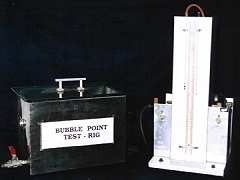

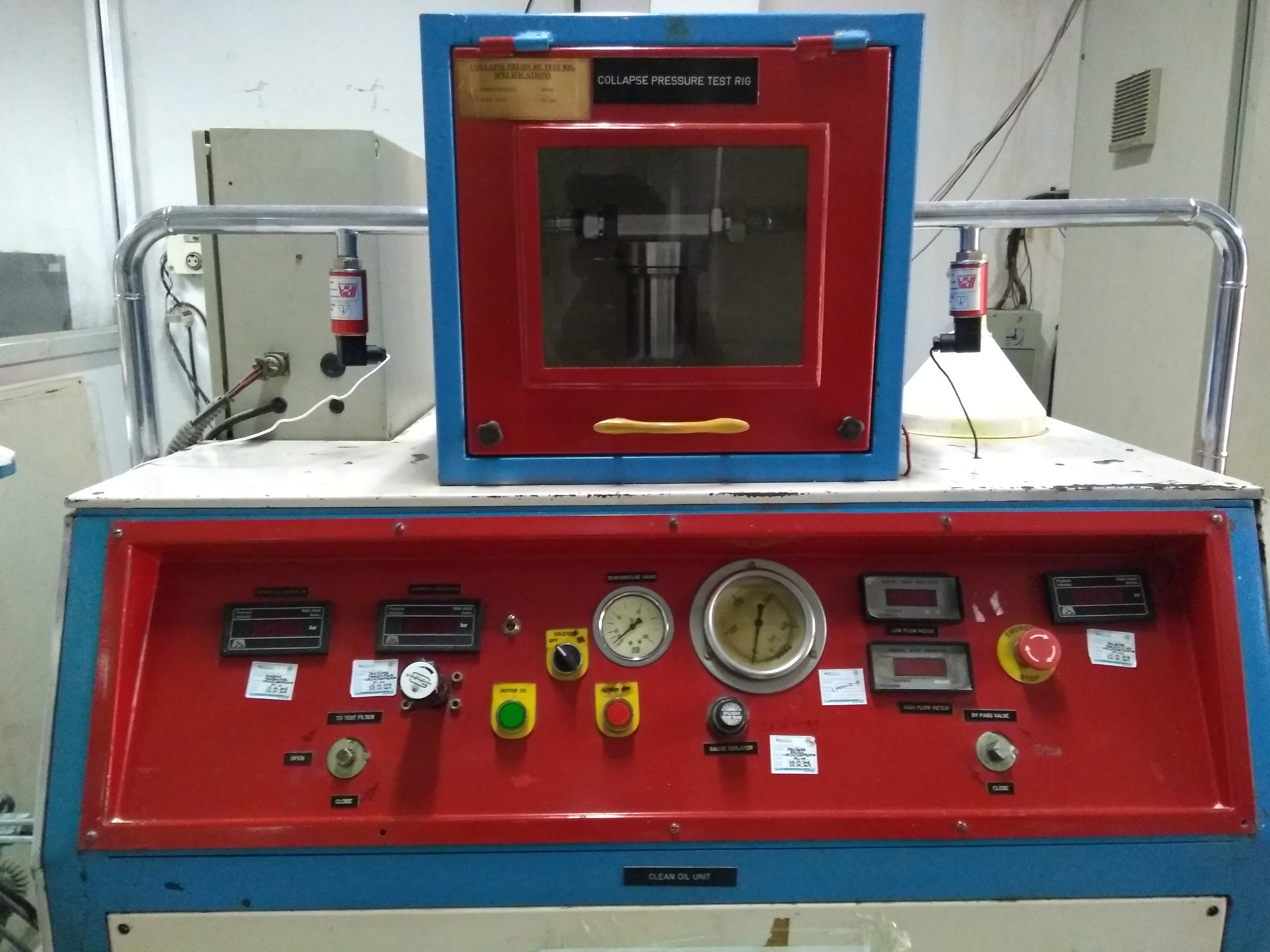
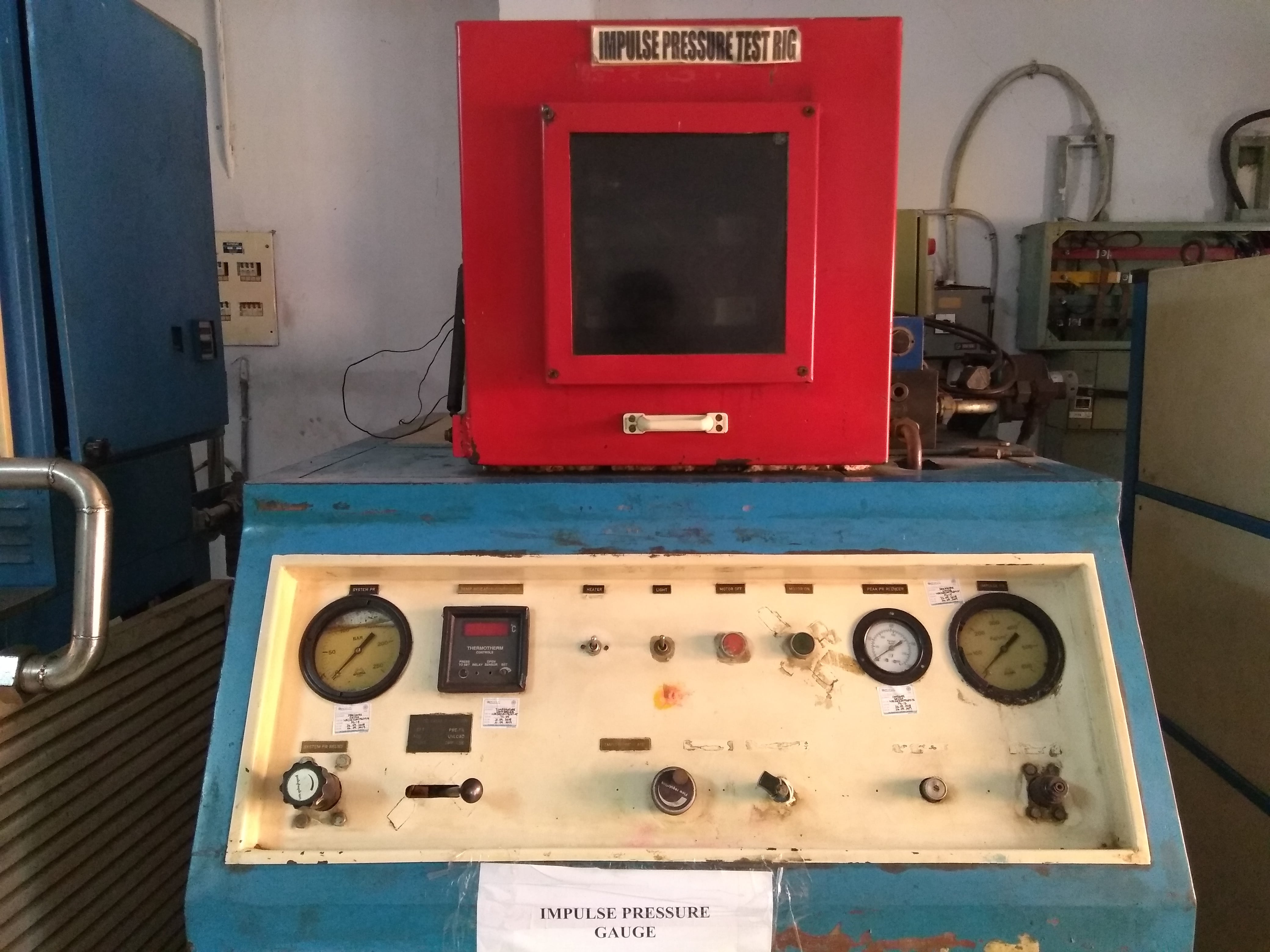
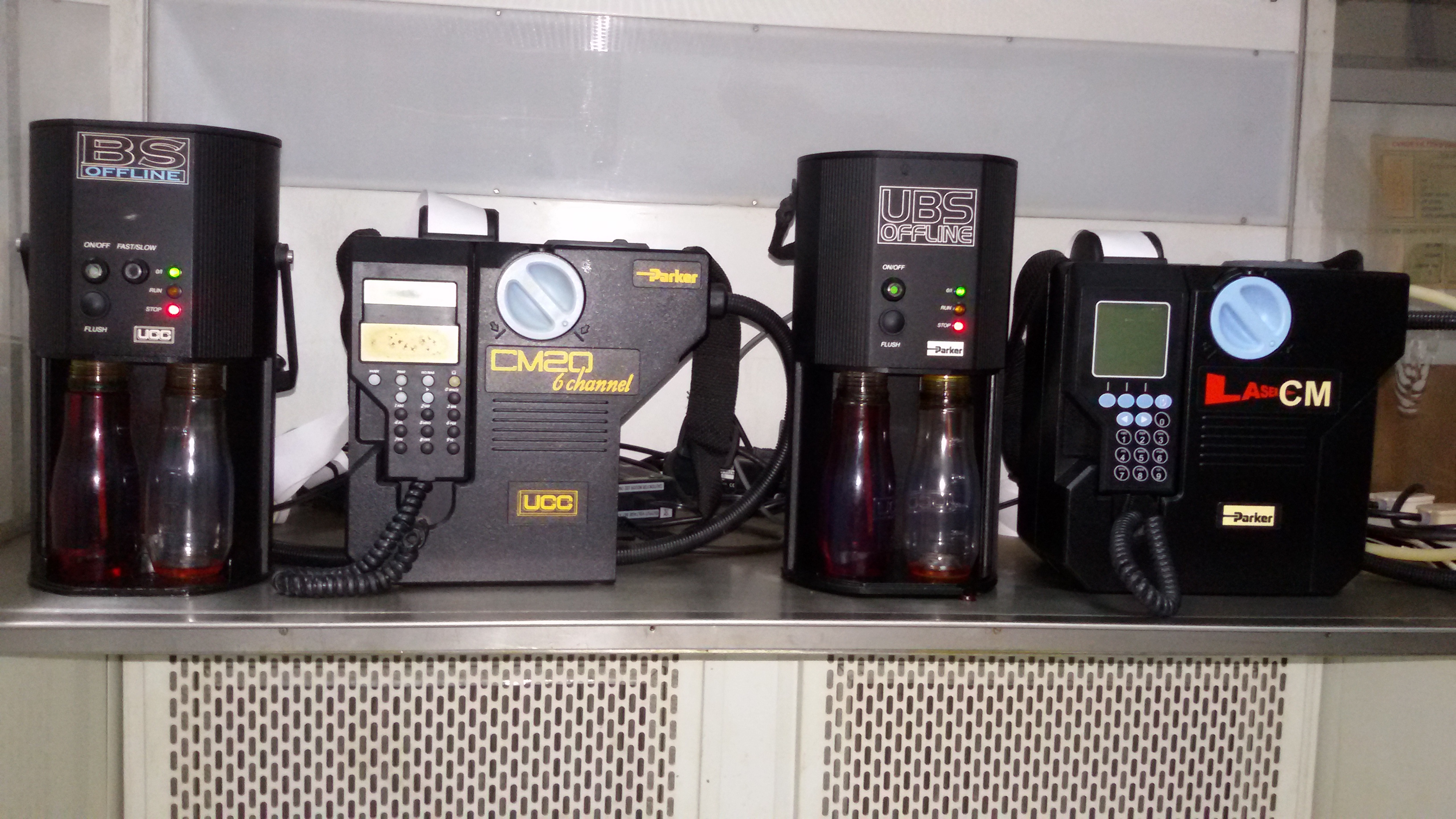

Extensive test facilities have been established at CVRDE as per International Standards of MIL- F- 8815D.
- Bubble point test rig
- Multi pass test rig
- Cold start test rig
- Collapse pressure test rig
- Impulse pressure test rig
- Proof pressure test rig
- Shut off valve test rig
- Ultrasonic cleaner
- Bottle flushing stand to clean the bottles to collect oil samples
- UCC Particle counters to check oil contamination level to find filtration efficiency
Test Facilities for PTO Shaft
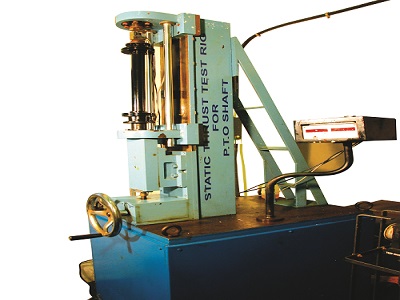
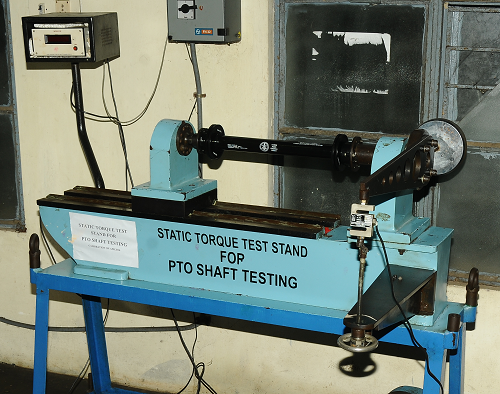
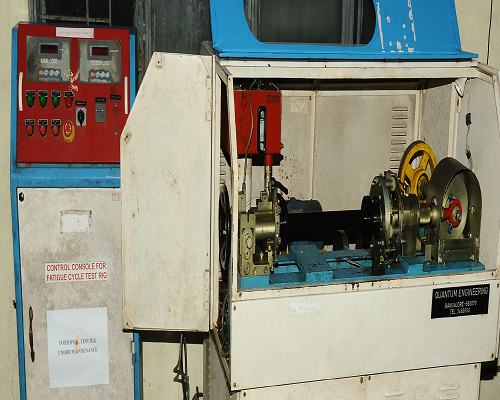
The PTO shaft should be tested for its capability of transmitting with torque at high speed accommodating centrifugal stresses, acceleration and stress due to large axial and lateral misalignments by means of stringent endurance and environmental tests. The endurance testing of PTO shaft are carried out using custom designed test rigs positioned at AP Division of CVRDE . These endurance tests are to be conducted on continuous basis for the acceptance and Life extension of PTO shaft, in co-ordination with Air Worthiness Certifying Authorities (AWCA). The Back to Back Test Rig is a “state-of-art Technology” based test rig used to conduct Acceptance and Qualification tests of PTO shafts at AP Division. With the PTO shaft Torsional fatigue Test rig, Torsioanl fatigue testing of PTO shaft is carried out. The static thrust test rig used for the axial misalignment capability of PTO shaft,has precision guidance to apply the imposed load in line with the PTO shaft center without any resulting side load on the assembly. The Static torque test rig to check and verify the satisfactory performance of Torque carrying capability of PTO shaft without any permanent deformation. This Static torque test Rig is also used for conducting shear section test, which is an important test to qualify the shear bolts of the PTO shaft to fail within the predetermined toque range within narrow band of tolerance.
Test Facilities for Bearings
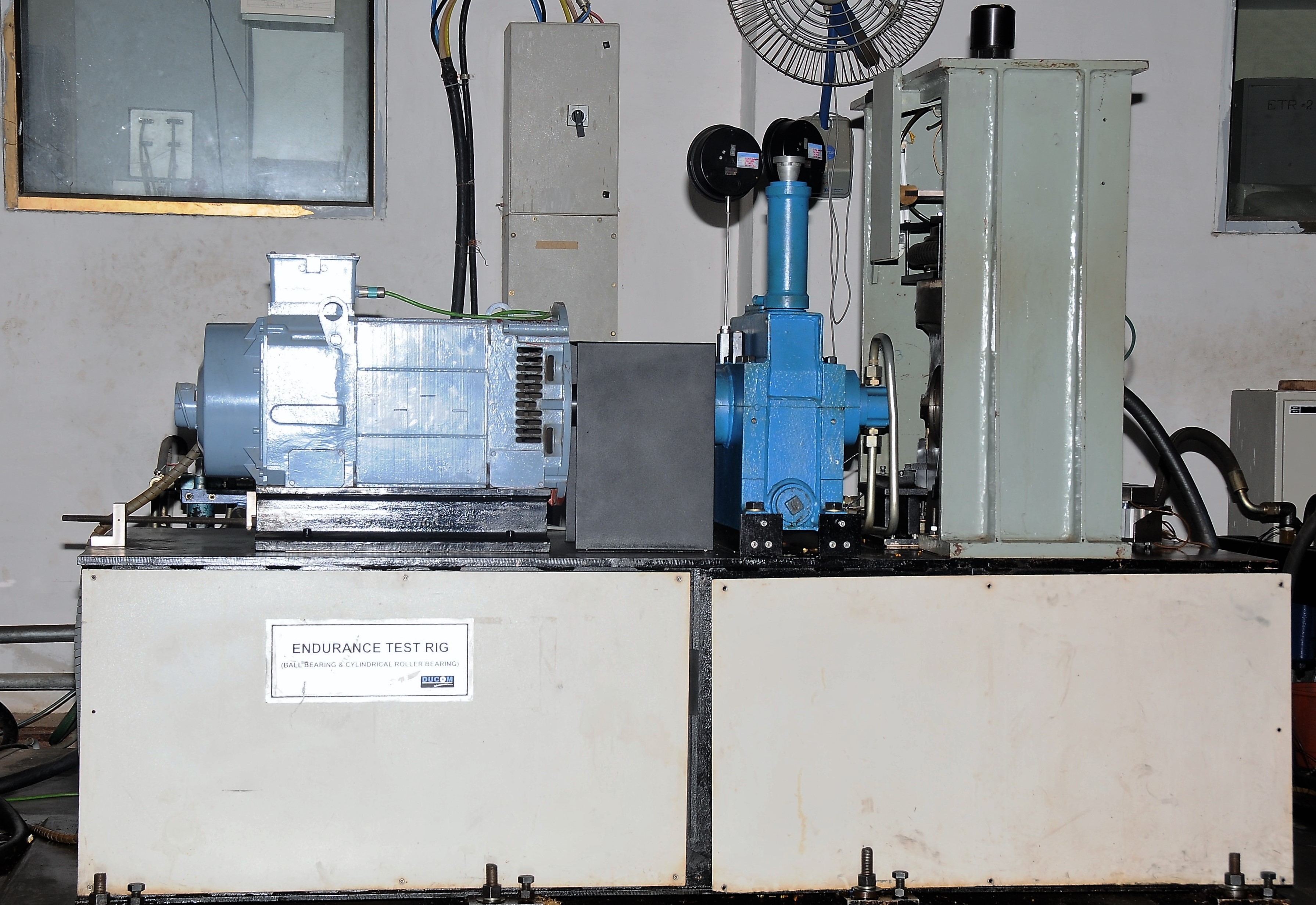
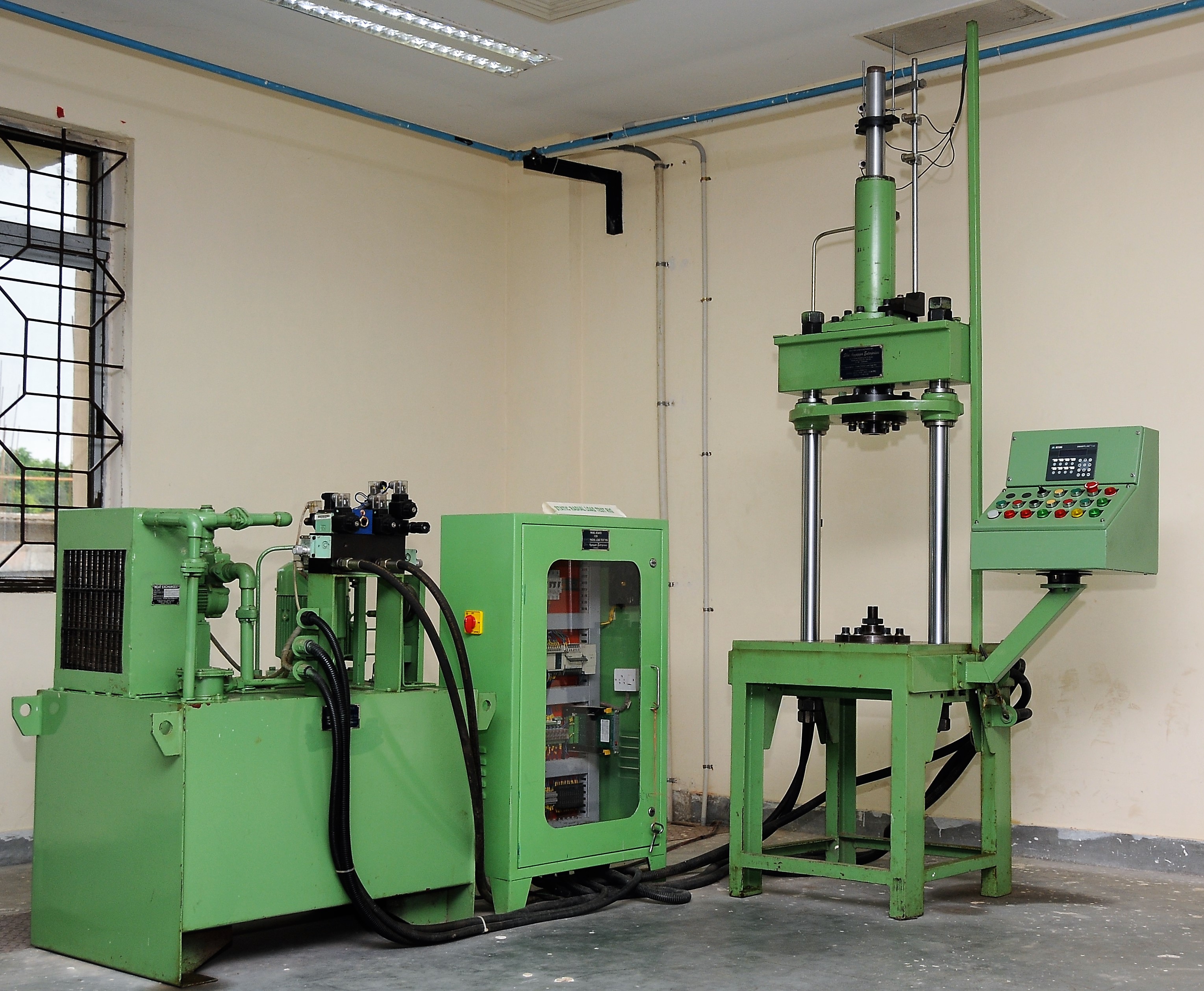
To carry out acceptance test and qualification test bearings, the test facilities such as vibration test rig, frictional torque test rig, static radial load test rig, endurance test rig, etc., are established.
Bearing endurance rig is used to evaluate the bearing performance by simulating the real application condition such as speed, loads. This test rig is capable of testing the bearings at high speed (20000 rpm) and high radial load (25 kN).
Static radial load test rig is established to test the static load capacity (65 kN) of bearings. Frictional Torque test rig is custom designed test rig to evaluate the rolling frictional force and frictional torque as per Mil standard.
Test Facilities for BLDC Generator
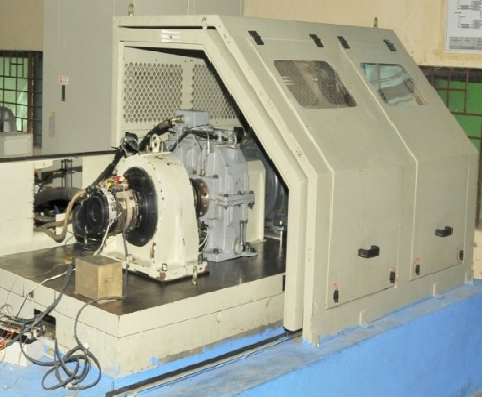
Generator Endurance Test rig is used to carry out Endurance test cycles on the 5 kW Generating system. The test rig comprises a variable speed motor with drive and an electrical load bank. The test rig features automated pre-programming of speed and load for various test schedule.
Test Facilities for Landing Gear

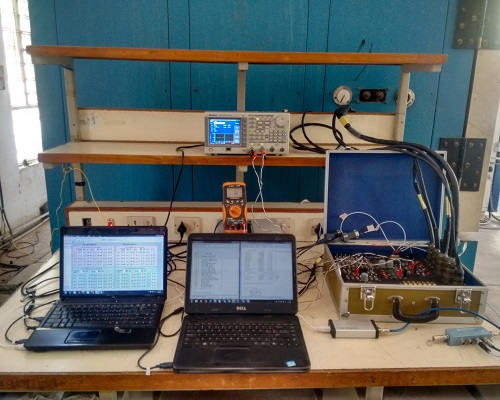
CVRDE established the following inhouse test facilities to test the Main landing gear and nose landing gear shock struts, Hydraulic actuator, landing gear controller and wire harnesses.
- MLG & NLG spring curve test
- Landing gear integration test facility
- Hydraulic actuator endurance Test facility
- Wire harnesses endurance test facility
- Landing gear controller ATE test facility

This facility is created with a mission to simulate different adverse environmental conditions and to test AFVs in an integrated condition. The facility consists of Sun simulation facility, Heating, Ventilation, Air-conditioning and Refrigeration (HVACR) & Programmable Logic Control (PLC). The climate chamber enables entry and positioning of MBT ARJUN Mark I, Mark II, Robotic vehicles, Futuristic combat systems. A special foundation is built to withstand higher loads. The foundation has many special layers and the top layer consists of Antiskid stainless steel checker plate.
SUN Simulation:
The solar radiation panel consisting of metal halide lamps fitted on top of the chamber so as to focus on top of AFV/equipment.
Heating, Ventilation, Air-conditioning and Refrigeration (HVACR)
The walls of HVACR chamber are made of High Density Poly Urethane foam (HDPU) to prevent heat transfer. To avoid ice formation, pipes are routed under the flooring to circulate hot water. Extreme temperatures can be simulated using the HVACR.
Programmable Logic Control (PLC) and Control room
Various sensors from HVACR chamber, compressors, humidifier and de-humidifier are routed to PLC for efficient control of chamber through software generated profile. Parameters such as temperature, humidity and solar radiation can be acquired using Datalogger. Also test can be monitored through CCTV cameras which are specially designed with defrosting arrangement, to provide clear view under hostile condition. The viewing glass windows of control room are designed with special heating arrangement to give a clear vision.

EMI/EMC test facility at CVRDE is a unique facility which can cater compliance testing of electronic & electrical subsystems of Armoured Fighting Vehicles and platform testing up to 70 tons. The facility includes a Semi-Anechoic Chamber (22 m x 16 m x 10 m), a Subsystem Testing Anechoic Chamber (9 m x 6 m x 6 m) and common control rooms. It consists of vehicle smoke extraction system and a turn-table which can withstand distributed loads up to 1.5 tons/m2. Hybrid absorbers are fully lined on all the sides and ceiling. The chambers consists of remote audio/ video monitoring, movable floor absorbers, RF shielded sliding doors with auto ramp for platform / subsystem entry. Shielding effectiveness of test facility conforms to IEEE 299 requirements. Simultaneous testing of subsystem and platforms can be conducted in the respective chambers with automated EMI/EMC test system as per MIL-STD-461 (Army, Navy and Air-force requirements)
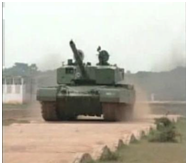
Test Track Range is situated close to CVRDE. The range has been developed to carry out preliminary testing of Armoured Fighting Vehicles (AFVs).
Facilities available at CVRDE test track:
- APG Blocks Obstacle test course
- Ramp with inclination
- Sinusoidal course
- Vertical obstacle & Trench crossing (Ditch crossing)
State-of-the-art hardware and software facilities are created to cater the FEA, CFD and multibody dynamics simulation requirements of CVRDE.
Training simulators were designed and developed by CVRDE to meet the various levels of training required to familiarize the Arjun MBT gunner, commander and driver on hardware controls and switches present in their respective compartment. Simulators impart exhaustive and extensive training in a cost effective way without using the actual MBT. The emergencies/ situations, which are not possible in actual tank training can be experienced through simulators and solutions to realize/overcome the problems can be imparted to the trainee during the exercise. Based on the training needs, the following simulators were, designed and developed indigenously by CVRDE:
- Classroom Trainer for Gunner and Driver
- Desktop Trainer for Gunner
- Gunnery Training Simulator
- Turret Simulator
- Driving Simulator and
- Troop Training Simulator
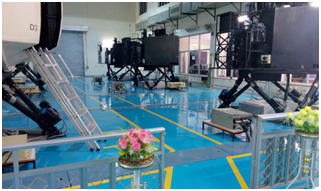
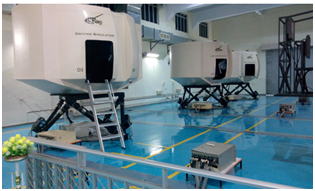
State of the art Arjun MBT simulatortraining centre facility, the first of its kind in Indiawas created at CVRDE for the AFV crew training.This innovative training facility with necessary infrastructure provides round the clock, cost effective training to the Arjun MBT crew from standalone crew level to integrated tank level and troop level.Three driving simulators and three turret simulators were installed at CVRDE and interconnected electronically through Local Area Network (LAN) for tactical troop training.
Salient Features
- Lesson plan and scenario editing with proper mission plans for each tank, to cater tactical training with troop formation procedures
- Plan, monitor and control the crew actions through instructor console
- Record and replay the crew actions during training
- Communication and monitoring of nine crew actions through single instructor station during troop training
- Emergency controls for six motion systems
- Training under different terrain and environmental conditions
- Open Hatch Display System for driver with 200° (H) and 45° (V) FOV
- PNVD and thermal imager for the crew during night time operations
- Camera view to monitor the physical movement of nine crew and six motion systems during simulator operation
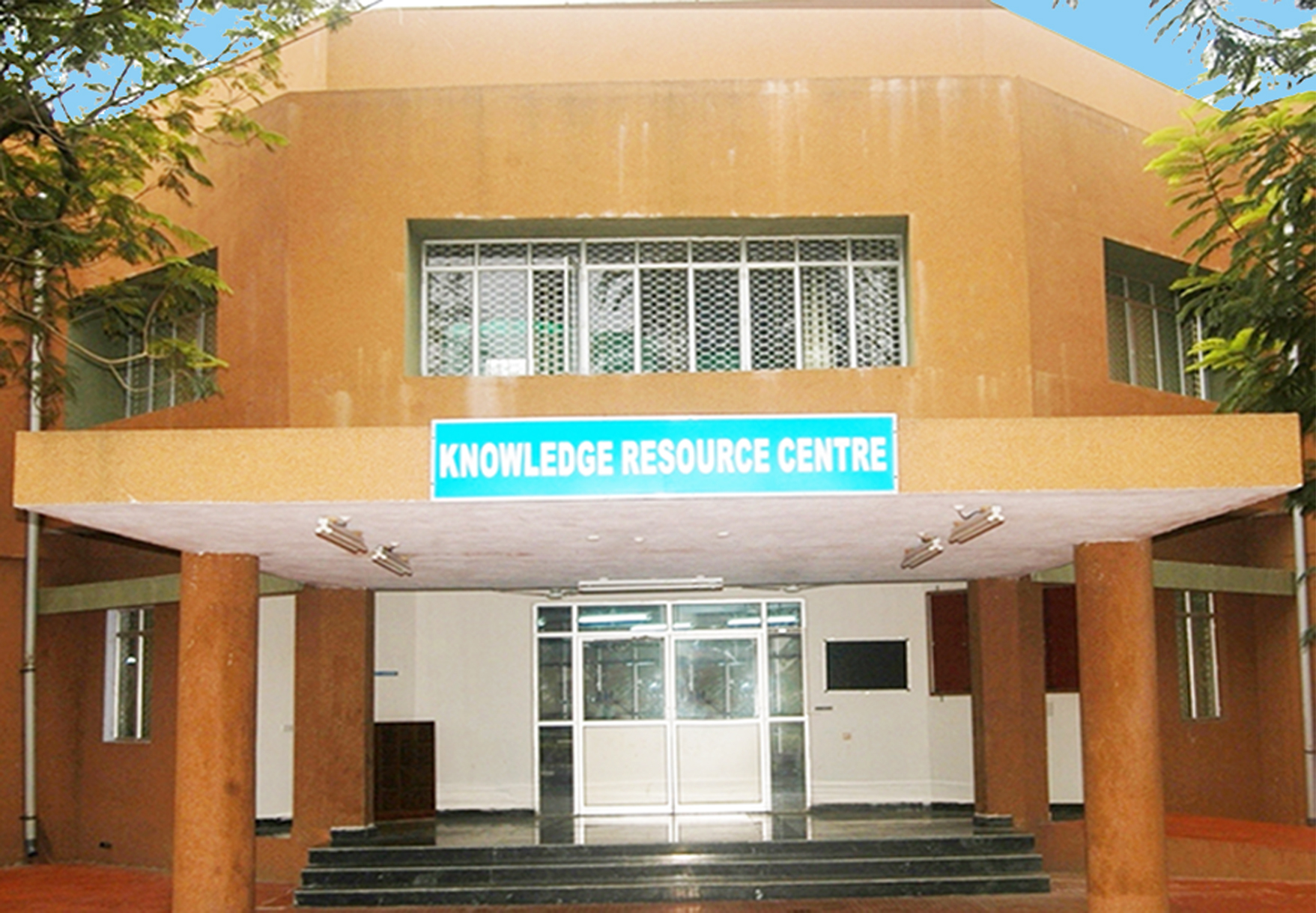

KRC offers sophisticated services to the users by providing modern facilities in acquiring pertinent information within minimum time possible. It includes the stack-cum-reading halls, data centre and Internet browsing centre. Stacking facility for the existing stock (43000 Nos.) as well for future expansion (100000 Nos.) is catered.
The network facilities at the KRC have paved way for access to subscribed e-journals of Sage and Taylor & Francis journals and also access to ASME, Elsevier, IEEE, Wiley and IHS Jane’s publications provided by DRDO e-journals Consortium. KRC is providing full-text access of Indian standards, British Standards, ISO Standards and SAE Ground Vehicle Standards in addition to e-journals, e-books and e-proceedings of SPIE.
Out of print books have been grouped under ‘Classic Books’, preserved using a specialized technology (photolam) and the digital version of selective titles are made available to users through KRC Portal. Full-text searchable KRC Digital Library contains full-text records of Classic Books, CVRDE in-house Reports, Technical Papers published by CVRDE employees, NTIS Reports and project specific articles, Technical books in various trades in Tamil and Hindi language are procured and kept as a separate collection in the KRC for the benefit of DRTC cadres and apprentices. The Library Automation software and Portal provides access to online resources/ digital contents of KRC through single window access service. RFID with provision for smart card integration is successfully introduced for circulation management.


